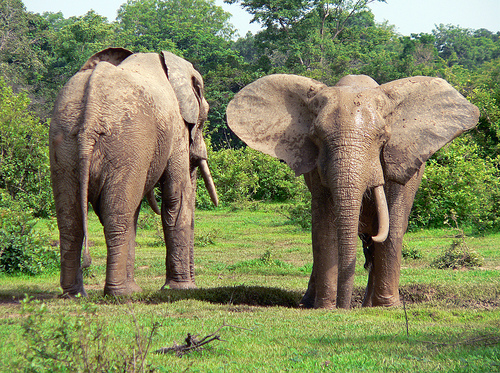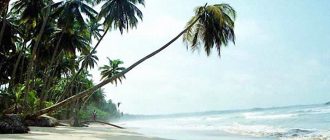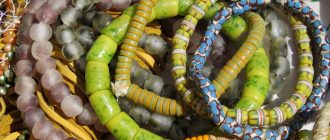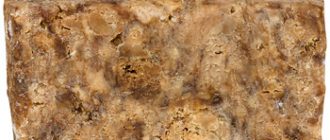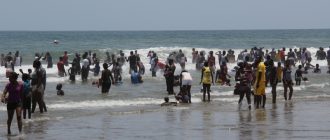Centrally located on the west coast of Africa, Ghana is home to large and viable wildlife populations and wild assets which form part of the country’s natural heritage. Ghanaian wildlife supports a growing eco-tourism industry that is a great complement to the strong historical and cultural attractions of the country. During your next visit to Ghana, be sure to pay a visit to one of the country’s wildlife parks and other Ghana wildlife conservation projects that will provide you with an interesting detour into the world of nature.
Volunteering Programs
If you have a keen interest in animals, the environment or ecology, there are opportunities to experience an entirely new climate in Africa. Volunteer programs in Ghana are available for students or individuals working in biology, forestry or environmental science, for which you may contribute to a local conservation centre or national park.
Ghana Most Dangerous Animals
Hippos are responsible for more human fatalities than any other large animal in Africa. Be sure to keep your guard in the event that you encounter a hippo or rhino in the wild. Rhinos are deadly and unpredictable and have been known to gore unsuspecting victims. The most dangerous animal in Ghana is perhaps the mosquito which is responsible for the deadly malaria disease. Nevertheless, you can protect yourself by taking anti-malarial medication for a month before you travel which enables your system to develop resistance. Be sure to also take the medication one month after leaving Ghana.
Ghana Endangered Animals
According to the 2004 IUCN Red List of Threatened Animals, the animals listed below are rated as Critically Endangered (CR), Endangered (EN) or Vulnerable (VU) in Ghana.
Critically Endangered:
• Groove-toothed Forest Mouse (Leimacomys buettneri).
Endangered:
• African Elephant (Loxodonta africana).
• Diana Monkey (Cercopithecus diana).
• Wild Dog (Lycaon pictus).
• Chimpanzee (Pan troglodytes).
• Red Colobus (Procolobus badius).
Vulnerable:
• African Elephant (Loxodonta africana).
• Buettikofer’s Epauletted Fruit Bat (Epomops buettikoferi).
• African Golden Cat (Profelis aurata).
• Fat Mouse Species (Steatomys jacksoni).
• Pied Bat (Chalinolobus superbus).
• Lion (Panthera leo).
• Red-fronted Gazelle (Gazella rufifrons).
• White-toothed Shrew Species (Crocidura foxi).
• West African Manatee (Trichechus senegalensis).
• Spotted-necked Otter (Lutra maculicollis).
• White-thighed Black-and-white Colobus (Colobus vellerosus).
Ghana is home to 18 wildlife-protected areas. These include:
• 7 National Parks [Mole, Kakum, Kyabobo, Bui, Bia, Nini Suhyien and Digya]
• 6 Resource Reserves [Ankasa, Gbele, Shai Hills]
• 4 Wildlife Sanctuaries [Kogyae, Bomfobiri, Kalakpa, Agumatsa]
• 5 Coastal Ramsar sites / wetlands [Keta lagoon, Songhor lagoon, Muni Pomadze and Densu Delta]
Mole National Park
Located in the Northern Region, Mole National Park provides opportunities for close encounters with huge Savannah elephants, baboons and other primates, as well as large antelopes and birds.
Kakum National Park
Kakum National Park is located near Cape Coast and offers nature lovers a deeper look at the natural world of insects, plants, reptiles, birds and monkeys, all of which may be viewed at dusk and dawn. One of the notable features of this park is the 370-metre long suspended canopy walkway that has been raised 40 meters above the floor of the forest. While at Kakum you can also visit Elmina and Cape Coast which are 30 km away, whose castles have been designated world heritage sites. These locations also house the oldest European buildings outside Europe with massive castles that chronicle the slave trade.
Ankasa Conservation Area
Situated in the Western Region, the Anksasa Conservation Area comprises of 3 protected areas and lies on Ghana’s border with the Ivory Coast. Home to more than 800 plant species, including endemic ones such as the recently discovered Psychotria, this conservation area represents the only wet evergreen protected area that is almost in an unspoiled state. Ankasa has also recorded more than 600 butterfly species, 6 confirmed primate species including the white-naped mangabey, as well as 3 unconfirmed species such as the Roloway Diana monkey, western chimpanzee and the Western black-and-white colobus. The conservation area also hosts more than 200 species of birds.
Kalakpa Resource Reserve
Kalakpa Resource Reserve is a wildlife-protected area in the Volta Region that also has waterfalls.
Agumatsa Wildlife Sanctuary
Agumatsa Wildlife Sanctuary is similar to the Kalakpa Resource Reserve in both location and attractions: it is situated in the Volta Region and also has attractive waterfalls that nature lovers can visit.
Kyabobo National Park
Situated in the northern part of the Volta Region, Kyabobo is a great spot to engage in physical adventure where you can splash around in the Kyabobo waterfall, as well as visit some fascinating traditional villages. Kyabobo National Park is dominated by hills, two of which form the popular “breast mountain”.
Bomfobiri Wildlife Sanctuary
Located in the Ashanti Region, the Bomfobiri Wildlife Sanctuary boasts remarkable caves and rock formations for those with a spirit of adventure.
Keta and Songhor Lagoons
If you are interested in the wetlands and Ramsar sites, then your best bet is visiting the Keta and Songhor Lagoons where you can watch the winter migratory and indigenous birds. During July and August, it is possible to see turtles including the olive ridley, the green turtle and the leatherbacks. Keta and Songhor are also famous for the artisanal fishing that goes on there. Other Ramsar sites are the Densu Delta and the Sakumo lagoon, located at the western and eastern ends of Accra respectively, as well as the Muni Pomadze found at Winneba.
Boabeng-Fiema
Located in the Brong Ahafo Region, the Boabeng-Fiema is a traditional sanctuary for Mona monkeys, as well as the Black and White Colobus. The special thing about this eco-tourism destination is the fact that humans have cohabited with monkeys for centuries. It is perhaps the only village in Africa with a special cemetery for monkeys where funerals are held.
The key responsibility of the Wildlife Division of the Forestry Commission of Ghana is the protection of wildlife and conservation of habitat and resources such that they may sustainably benefit future and present generations. This is achieved through the education of fringe communities and the public on better utilization of resources, as well as the management of conservation areas for eco-tourism purposes. With its wildlife and wild habitats, Ghana offers great opportunities for adventure amongst nature lovers, researchers, volunteers and students.

